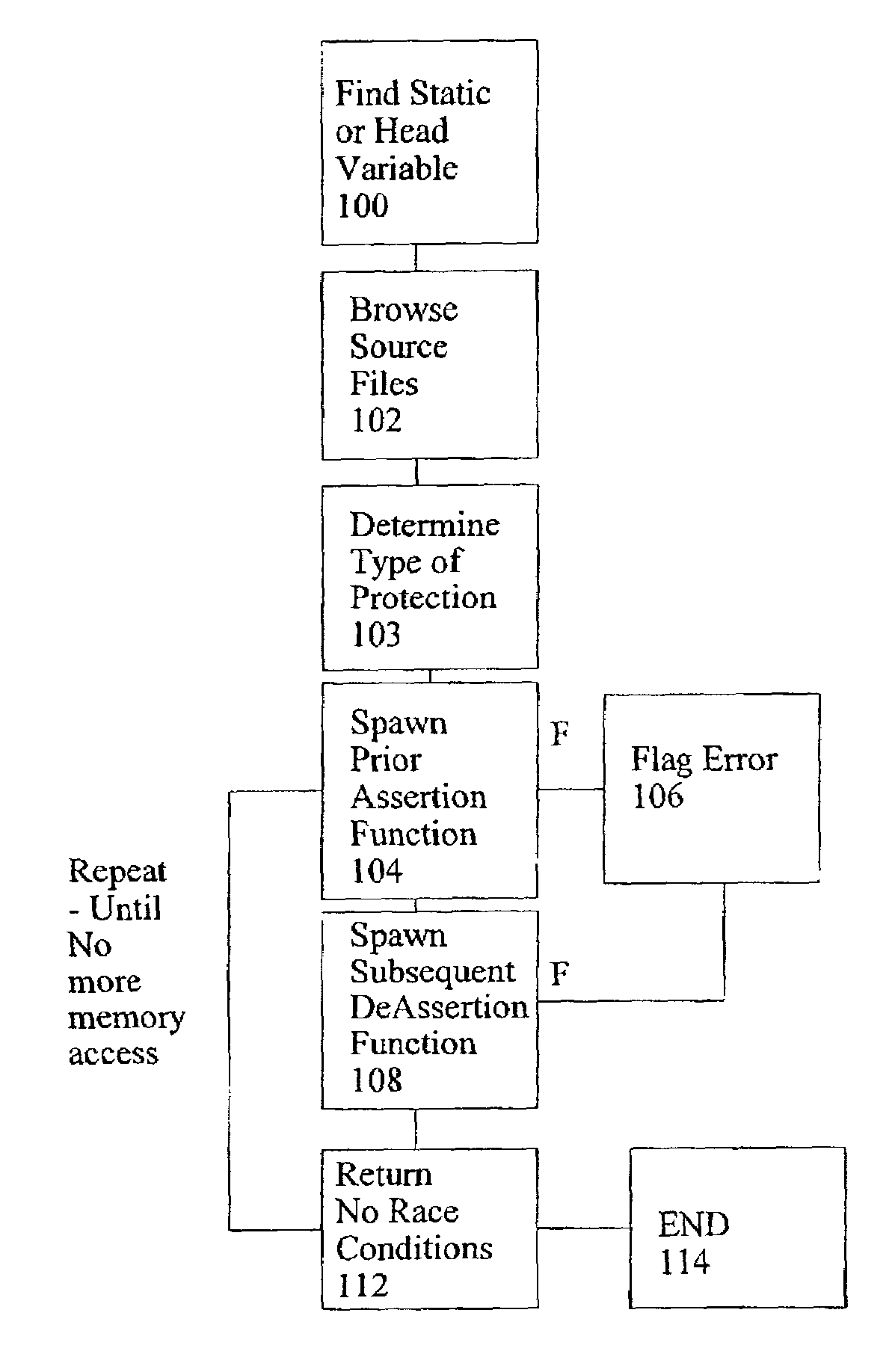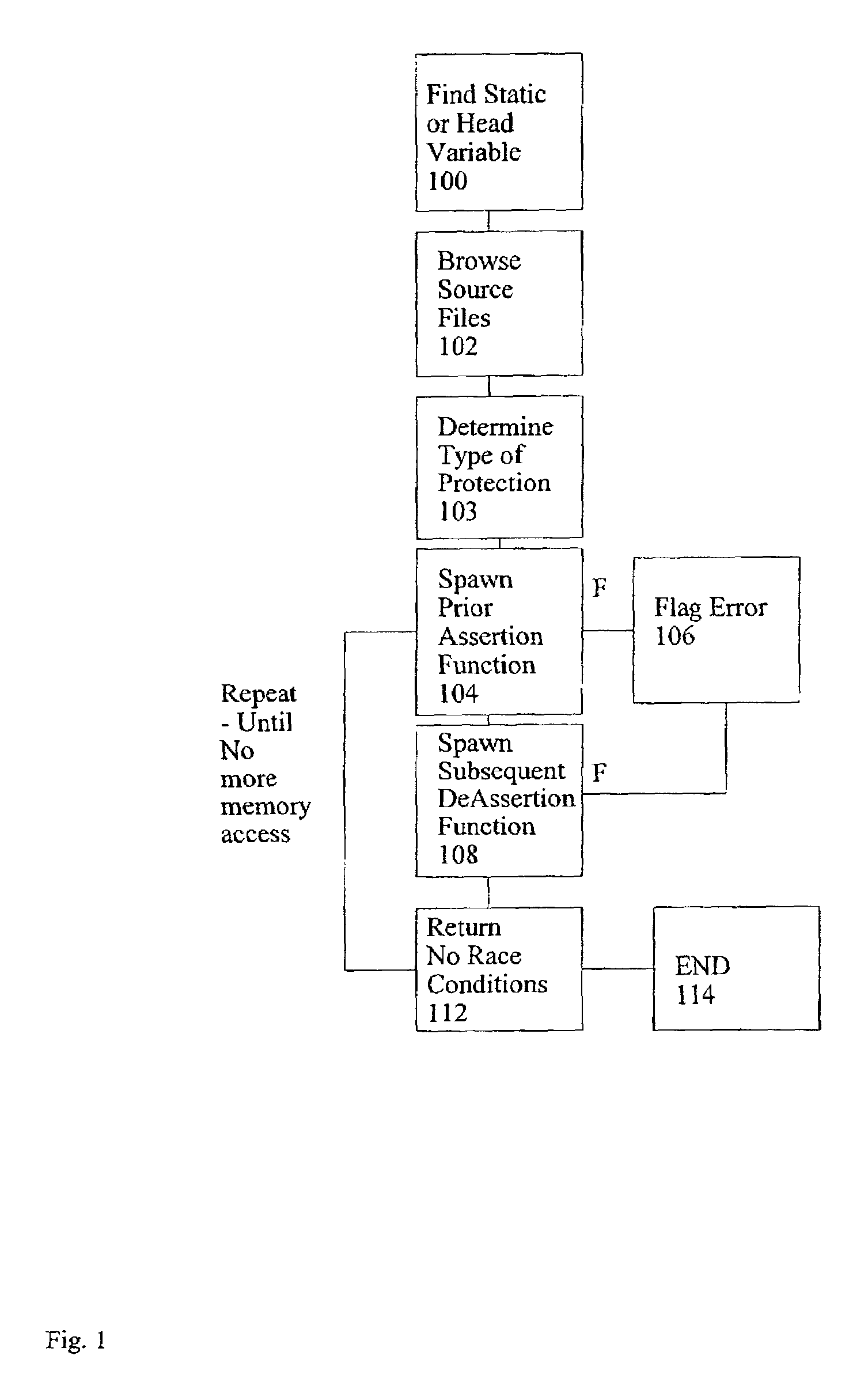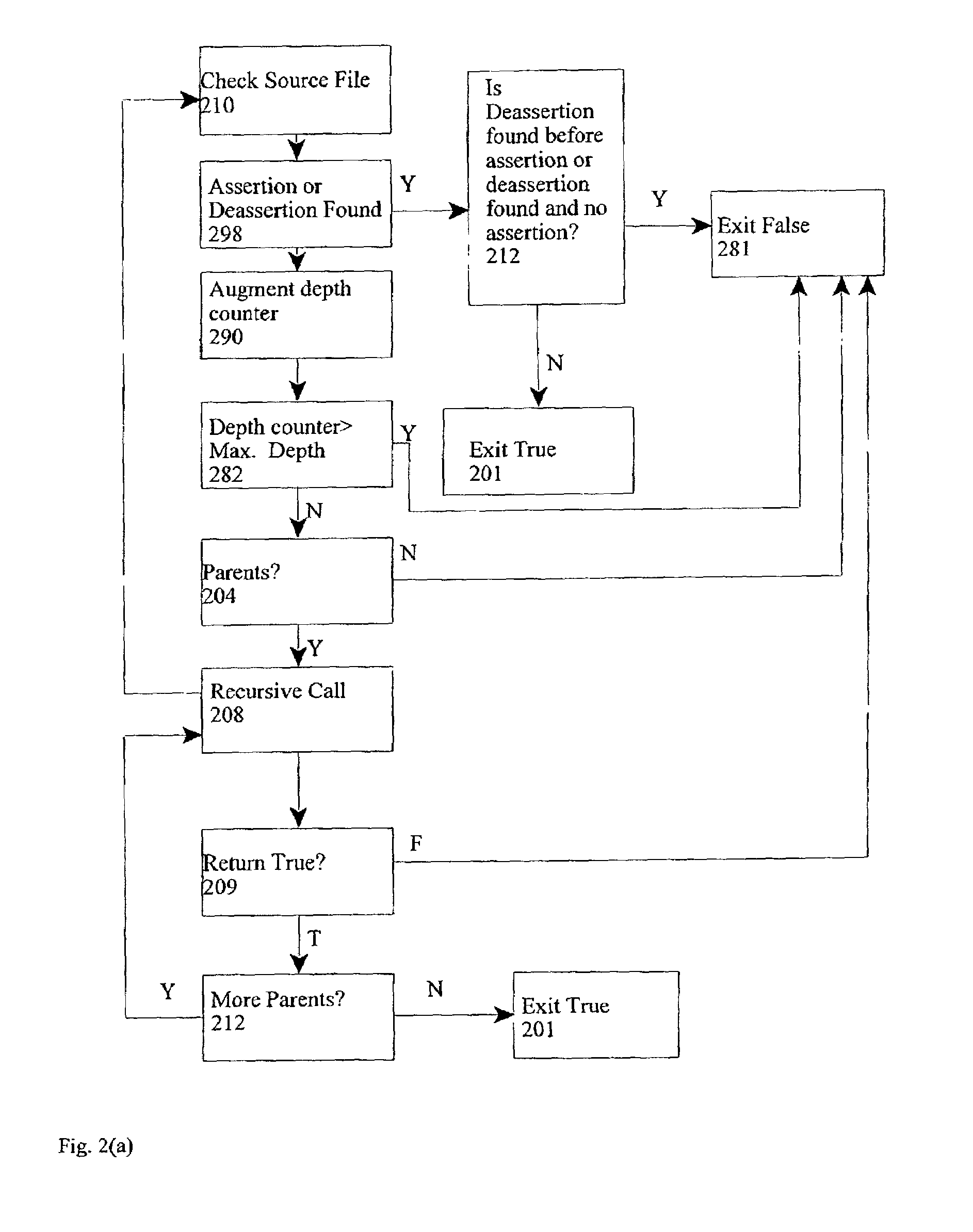Automated tool for detection of potential race condition
a technology of automatic tool and race condition, applied in the direction of unauthorized memory use protection, multi-programming arrangement, instruments, etc., can solve the problems of inability of the system to respond to external events for the duration of the lock, inability to detect the race condition, and inability to respond in real tim
- Summary
- Abstract
- Description
- Claims
- Application Information
AI Technical Summary
Benefits of technology
Problems solved by technology
Method used
Image
Examples
Embodiment Construction
[0018]FIG. 1 shows a flow chart for a preferred method of detecting potential race conditions in accordance with the present invention. First, the method finds a static or heap variable that is in one or more source files (e.g., a function, procedure, or section of source code)(Step 100). The source file can be conceptualized as a parent and a child node. The parent node is the statements that are executed before the memory access, and the child node is the statements that are executed after the memory access. The method may, for example select the variable that it searches for by prompting the user for a variable name or by allowing the user to browse the source files. Next, the method of detection for race conditions browses one or more selected source files to find one or more memory accesses for the variable (Step 102). After browsing the selected source files (Step 102), the method determines the type of protection mechanism used for each of the memory accesses, for example, a ...
PUM
 Login to View More
Login to View More Abstract
Description
Claims
Application Information
 Login to View More
Login to View More - R&D
- Intellectual Property
- Life Sciences
- Materials
- Tech Scout
- Unparalleled Data Quality
- Higher Quality Content
- 60% Fewer Hallucinations
Browse by: Latest US Patents, China's latest patents, Technical Efficacy Thesaurus, Application Domain, Technology Topic, Popular Technical Reports.
© 2025 PatSnap. All rights reserved.Legal|Privacy policy|Modern Slavery Act Transparency Statement|Sitemap|About US| Contact US: help@patsnap.com



